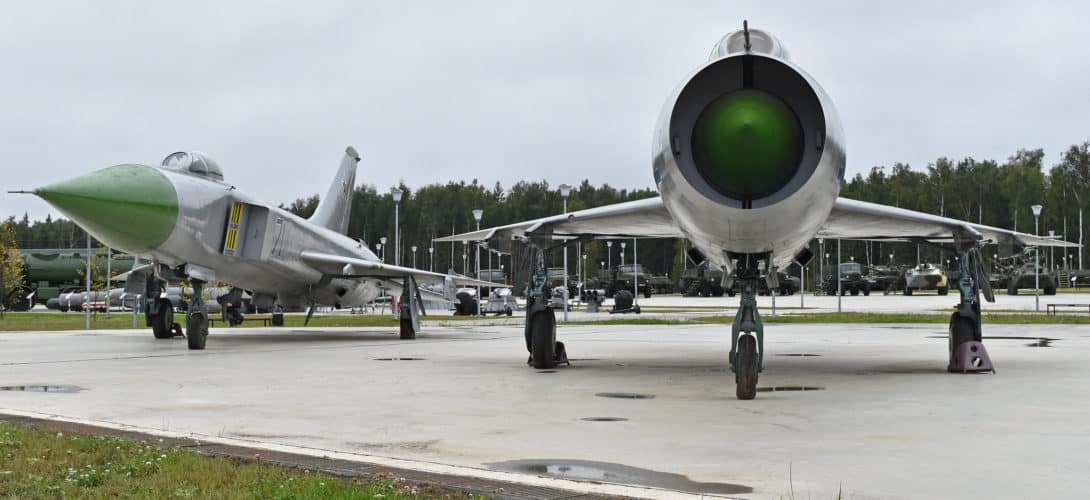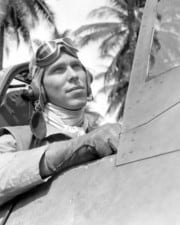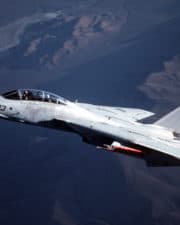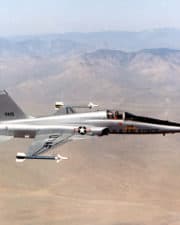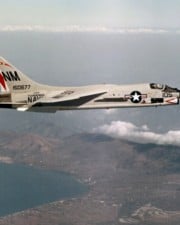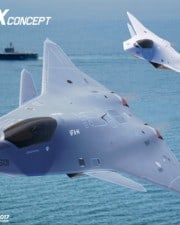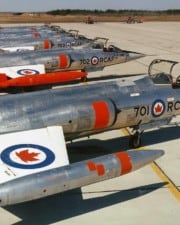Founded in 1939, Sukhoi has been synonymous with Soviet bloc and Russian aviation excellence for three quarters of a century. Which of its fighter jets rank among the company’s most important contributions to Russian military and aviation history?
Many of the Sukhoi fighters on this list were developed while the Soviet Union was still in existence. Sukhoi established itself from the start as a premier name in the Soviet aviation industry, and the history of both Russian/Soviet aviation and military history can be tracked in part through Su fighters.
While the birth of Sukhoi came on the eve of the Second World War, it really came of age as a producer of jet fighters as the 20th century progressed. Whatever else may have been happening in the USSR, Sukhoi’s jet fighters were always among the best in the world.
When the Soviet Union played Cold War games with the United States in terms of seeking out military and political influence around the world, Su jet fighters were one of their biggest chips. Several Soviet-aligned countries acquired Su fighters for their air force’s repertoire.
Even after the Soviet Union dissolved, Su fighters remained one of the gold standards of the industry. Indeed, Russia was forced to confront Georgian Su fighters given to it by the former USSR during their 2008 conflict.
Today, Su fighter jets continue to be among the best fifth-generation and potentially sixth-generation jet fighters.
Sukhoi: A Strong Tradition of Soviet/Russian Aerial Excellence
aerocorner.com
These are the top nine Russian fighter jets.
1. Su-25
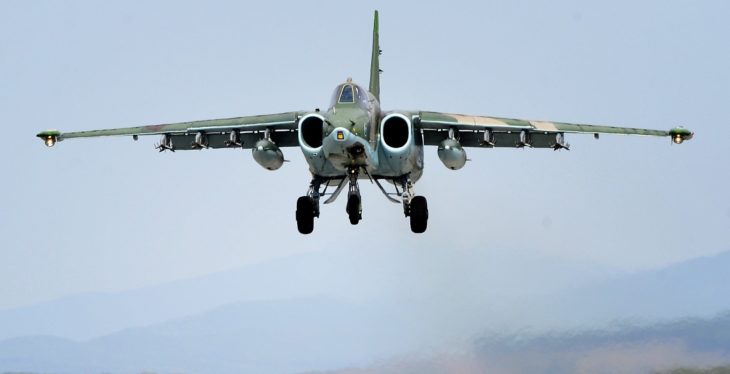
First introduced in the early 1980s during the Soviet invasion of Afghanistan, Soviet pilots employed them primarily in air-to-ground attacks on Afghan rebels in mountainous positions. It’s estimated that 21-plus Su-25s were destroyed due to combat operations during the course of the war, including attacks on them while grounded.
They were also employed by the Iraqi Air Force during the Iraq-Iran and Gulf War. Saddam Hussein handed out military decorations to Su-25 pilots in the former conflict, while the latter saw Saddam attempt to bolster his number Su-25s, though most were destroyed on the ground without a fight.
The Su-25 measured 50 feet 11 inches, could attain a maximum speed of 606 mph via a 2×Soyuz/Tumansky R-195 turbojet engine, and was armed with 1×30mm Gryazev-Shipunov GSh-30-2 autocannon, S-5 or S-8 rockets, and several types of air-to-air, air-to-surface, and anti-radiation missiles and bombs.
2. Su-27
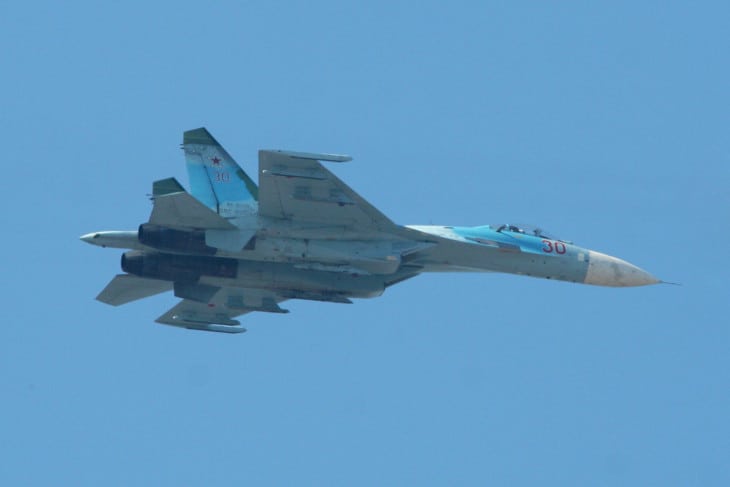
Introduced into the Soviet arsenal during the final years of the USSR, the Su-27 would be employed shortly thereafter during Russia’s 1992-3 war with Georgia over Abkhazia. The aerial conflict saw battles with Soviet-made Georgian Su-25s, with one Russian Su-27 pilot dying in a friendly fire incident.
The 2008 Russian-Georgian War saw Russian Su-27s being used to gain air supremacy over the capital of South Ossetia, engaging in air-to-ground attacks, while 2013 saw two Su-27s briefly violate Japanese airspace. The Su-57 is planned as an eventual replacement for the Su-27.
The Su-27 measures 71 feet 10 inches, can obtain a maximum speed of 1600 mph via 2×Saturn AL-31F afterburning turbofan engines, and has an armament of 1×30mm Gryazev-Shipunov GSh-30-1 autocannon, S-8, S-13, and S-25 rockets, R-27R/ER/T/ET/P/EP and R-73E AAMs air-to-air missiles, and RBK-250 and RBK-500 cluster bombs.
3. Su-30

The Su-30 has since seen much action in the form of Russian intervention in the Syrian Civil War. Some were spotted operating out of Bassel Al-Assad International Airport, and some reports had them attacking Syrian rebels against the Assad regime, especially during the Hama Offensive.
Russia isn’t the only air force making use of the Su-30 for strategic aims. China has dozens in its air force to counter US influence in the region, while both Armenia, Belarus, and Kazakhstan can count themselves as former Soviet states which own and operate Su-30s.
The Su-30 measures 72 feet, can reach 1320mph courtesy of 2×Saturn AL-31FL Afterburning turbofan engines, and can be armed with 1×30mm Gryazev-Shipunov GSh-30-1 autocannon along with various types of rockets, air-to-air, air-to-ship, air-to-surface, and anti-radiation missiles, and a wide variety of bombs.
4. Su-34

Another Russian fighter jet rumored to have participated in the 2008 Russian-Georgian War, the Su-24 has also been involved in a fair few accidents already, from one slipping off the runway in Voronezh in 2015 to fighters being damaged during transport in 2016 to a collision between Su-34s in 2019.
The Su-34 has also participated in Russia’s air war in Syria. These strikes have been carried out not just against ISIS but also anti-Assad rebel forces, targeted and killed 65 Al-Nursa terrorists in 2016, and on another occasion in 2020 struck a Turkish military convoy.
The Su-34 measures 76 feet 7 inches, can attain a maximum speed of 1400 mph, and can be armed with 1×30mm Gryazev-Shipunov GSh-30-1 autocannon along with B-8, B-13, and O-25 rockets as well as air-to-air, air-to-surface, anti-ship, anti-radiation, and cruise missiles as well as general, laser-guided, and cluster bombs.
5. Su-57

The latest in the long line of Sus on this list, the Su-57 is one of the most advanced jet fighters in the world today. It is one of the newest ones as well, having just completed its lengthy development cycle to emerge on the scene in December 2020.
Mass production is expected to pick up, with Russia hoping for as many as 76 by the close of the decade. Turkey has looked into acquiring them as well if F-35 sales fall through, and both Algeria and China have reportedly explored acquiring some, though their governments officially deny this.
The Su-57 measures 65 feet 11 inches long, can reach 1534mph via 2×Saturn AL-41F1 turbofans, and can be armed with many different air-to-ground, air-to-air, anti-radiation, and anti-ship missiles, including the RVV-MD, R-73, R-37M, Kh-38ME, Kh-59MK2, Kh-35E, and Kh-58UShKE.
6. Su-7
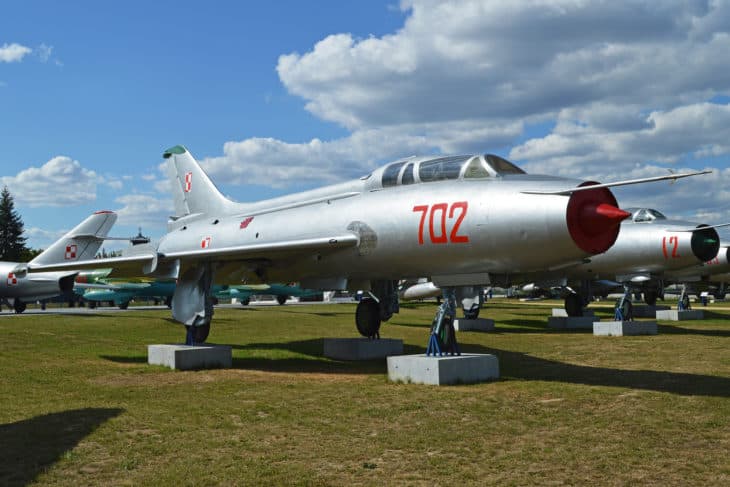
There have been many Su fighters over the years and as one of the first to take to the skies, the Su-7 was mainly used for air-to-ground attack purposes. This was its role in the Yom Kippur War, where it was used to attack Israeli ground forces.
They also played a key role during India’s 1971 war with Pakistan, in which 14 Su-7s were lost, most due to anti-aircraft fire, though the Su-7s maintained a relatively high survival rate. Only North Korea still uses the Su-7, with former operators including the former Czechoslovakia, Afghanistan, Iraq, and Poland.
The Su-7s measured 30 feet 7 inches, had a maximum speed of 1340 mph via 1×Lyulka AL-7F-1 afterburning turbojet, and were armed with 2 ×30mm Nudelman-Rikhter NR-30 autocannons and S-5 rockets, and bombs, including the capability to carry nuclear bombs.
7. Su-9

You would be forgiven for mistaking this fighter jet for another classic of the Soviet Air Force, the MiG-21, as the two were so close as to appear nearly identical to the naked untrained eye. Unlike the MiG-21, however, the Su-9 served more as a future model than a combat jet.
A Su-9 may have been involved in the 196 downing of Gary Rogers, a Cold War incident in which an American U-2 was shot down during a spy mission in Soviet territory. One rumor is that a Su-9 had been given orders to ram Rogers’ U-2, but this is unconfirmed.
The Su-9 measures 55 feet, had a maximum speed of 1390 mph via 1×Lyulka AL-7F-1-100 afterburning turbojet engine, had an operational range of 840mi and maximum takeoff weight of 27,584lbs, and could be armed with 4×K-5 air-to-air missiles.
8. Su-11
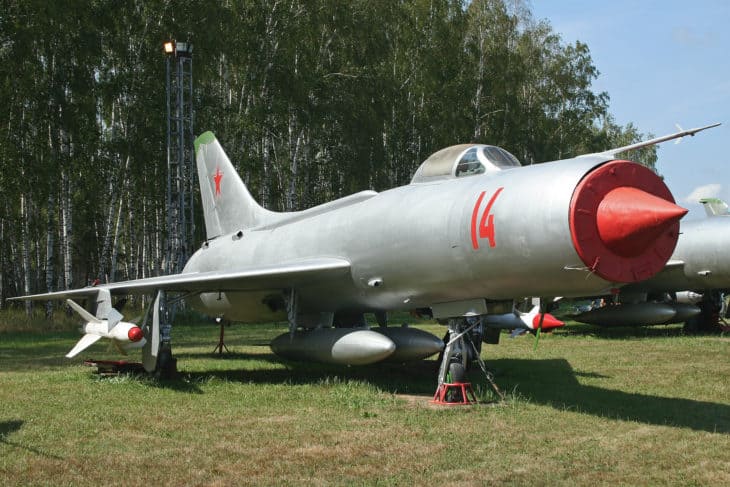
Another example of a fighter jet that saw more use as a prototype and model for later fighters than in its own right, the Su-11 was initially conceived as an upgraded version of the Su-9. However, only 108 were ever made and it proved to be less popular than imagined.
The first prototype was created in 1958 but production only lasted until 1965, with one reason being that it was heavily reliant on ground control interception systems to help vector targets. However, they remained useful as trainer jets for Russian pilots into the 1980s.
The Su-11 measured 59 feet 10 inches, could attain a maximum speed of 1450mph via 1×Lyulka AL-7F-1 afterburning turbojet engine, and was armed with 2xK-8 air-to-air missiles but, due to its lack of popularity, later trainer status, and like other contemporary Soviet interceptors, it did not carry cannons.
9. Su-15


First developed in the late ‘50s and early ‘60s, the Su-15 was introduced at this time as the Su-9 and Su-11 were starting to become obsolete with the rise of more modern aircraft from NATO. However, throughout its history, the Su-15 was involved in a few moments of international controversy.
In 1978, Korean Air Lines Flight 102 from Paris to Seoul was mistakenly identified as a threat and shot down by the USSR near the Finnish border, though thankfully only 2 of the 109 passengers died. Unfortunately, Korean Air Lines Flight 007, a similar 1983 incident, resulted in 269 fatalities.
The Su-15 measured 64 feet 2 inches, was able to achieve a maximum speed of 1390mph via 2×Tumansky R-13F-300 afterburning turbojet engines, and could be armed with 2×UPK-23 gun pods with 2×23 mm Gryazev-Shipunov GSh-23L autocannons and various rockets, missiles, and bombs.
Related Posts
